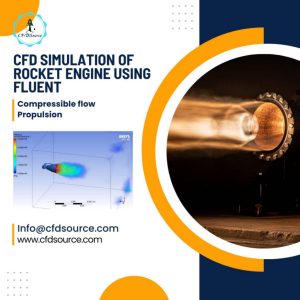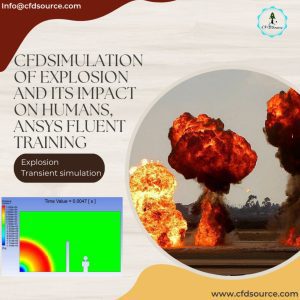The Critical Choice: Why Your Simulation Software Can Make or Break Your R&D Project
Choosing your simulation software isn’t like picking a favorite brand of coffee. It’s a foundational decision that can lead to a breakthrough or a dead end. I’ve seen projects waste months of time and significant budget simply because the team started with a tool that wasn’t suited for the core physics of their problem. A powerful CFD solver is great, but if your problem also involves electromagnetics and structural deformation, you might be trying to fit a square peg in a round hole.
The right choice accelerates your time-to-market. The wrong one sends you back to the drawing board. This guide is designed to give you a clear, no-nonsense framework for understanding when to use Comsol for coupled multiphysics and CFD analysis, based on real-world project experience. It’s the kind of practical advice we provide in our [CFD Analysis Consulting] services.
What Is a True “Coupled Multiphysics” Problem? Beyond a Simple FSI
Let’s be clear. A lot of software can handle a basic fluid-structure interaction (FSI). That’s multiphysics, technically. But “true” coupling is different. It’s when the two (or more!) physics are so intertwined that they must be solved simultaneously, not sequentially. The solution of one directly and instantly affects the other within the same time step.
Think of it like this: heating a fluid in a pipe (thermal-fluid) is often loosely coupled. You can often calculate the flow and then the heat transfer. But simulating a piezoelectric pump? The electrical field deforms the structure, which pumps the fluid, and the fluid pressure in turn affects the structural deformation. That’s a tightly-coupled problem. COMSOL was built from the ground up for exactly this kind of intertwined problem.
The COMSOL Philosophy: Why It’s Built on Equations, Not Just Black Boxes
Here’s the fundamental difference you need to grasp. Most traditional CFD software is built around specific, optimized solvers for fluid dynamics. They are incredibly good at that one thing. COMSOL, on the other hand, is essentially a general-purpose solver for partial differential equations (PDEs).
This is a fundamental shift in thinking. Instead of choosing a pre-packaged “Turbulent Flow” module, you are given the building blocks—the equations for momentum, heat, and mass transport—and you assemble them to represent your unique problem. This gives you unparalleled flexibility. For anyone needing to go beyond standard models, our [Comsol Consulting services] often start by leveraging this very capability. It’s a physicist’s and research engineer’s dream.
Green Flags: 5 Scenarios Where COMSOL is the Unbeatable Choice
So, when does the alarm bell ring in your head, telling you “This is a COMSOL job”? After years of running simulations, I’ve found it boils down to a few key scenarios. If your project falls into one of these categories, you should seriously consider it.
1. Highly Non-Standard Physics: When You Need to Write Your Own Rules (e.g., Plasma-Fluid Interaction)
Ever tried to model a process that doesn’t fit neatly into any commercial software’s menu? This is where most CFD packages just… stop. Its not that they’re bad; they’re just not designed for it. Simulating something like the interaction of a plasma torch with a gas flow, or modeling electrochemical reactions within a porous electrode, requires you to define custom physics or modify existing equations. COMSOL’s equation-based interface is purpose-built for this. You’re not just a user; you’re the architect of the simulation.
2. Tightly-Coupled Phenomena: AC/DC, Heat Transfer, and Fluid Flow in One Model (e.g., Inductive Heating)
I remember a project for a medical device manufacturer. They were designing a catheter for thermal ablation that used RF energy to heat tissue. We had to model the RF electromagnetic field, the resulting heat generation in the tissue, the blood flow carrying that heat away, AND the structural expansion of the catheter tip. Trying to do this by passing data between two or three different software packages would have been a nightmare.
In COMSOL, we built a single model with all these physics interacting in one environment. It was complex, and getting it to converge required a deep understanding of solver settings—a common challenge we cover in our [troubleshooter’s guide to fixing convergence]. The result was a highly accurate prediction of the lesion size, which was later validated by lab data. This is the kind of problem where COMSOL shines.
3. Microfluidics & Electrokinetics: Where Surface Forces and Electromagnetics Dominate
At the micro-level, the entire rulebook of physics changes. Gravity becomes almost irrelevant, while things like surface tension, electrostatic forces, and electro-osmotic flow become dominant. Think of lab-on-a-chip devices, DNA sequencing, or particle sorting using dielectrophoresis. 🔬
These applications are inherently multiphysics. COMSOL has dedicated modules and features that make setting up these simulations much more straightforward than in a conventional CFD tool, where you’d have to implement these forces manually as user-defined functions, which can be a complex and error-prone task.
Caution Zone: When to Consider Alternatives Over COMSOL
Let’s be honest, no tool is perfect for everything. If your work is 99% high-Mach number aerodynamics or detailed combustion modeling in a gas turbine, a dedicated CFD solver is likely your best bet. These codes have spent decades optimizing their solvers and turbulence models for those specific applications. The choice often comes down to a detailed comparison of capabilities, much like we discuss in our breakdown of [Fluent vs. CFX for specific applications]. Using the right tool for the job is paramount, and sometimes, that tool isn’t COMSOL.
For “Pure” High-Fidelity Turbulence Modeling: Is COMSOL the Right Tool for the Job?
If your entire project hinges on resolving the finest details of a highly turbulent flow—say, a Large Eddy Simulation (LES) over a full aircraft wing—you might find that specialized CFD codes have an edge. These programs often have more advanced, highly optimized turbulence models and numerical schemes specifically for aerospace and turbomachinery applications.
This isn’t to say COMSOL can’t do turbulence. It can, and it does it well for many engineering problems. But for cutting-edge, computationally massive “pure CFD” tasks, the performance and specialized feature sets of other codes might be better suited. It’s crucial to match the tool to the task’s primary challenge. A great simulation always starts with great mesh, no matter the software. If you’re working with complex geometries, brushing up on [advanced meshing techniques for accuracy] is always time well spent.
Large-Scale “Brute Force” CFD: A Note on Solver Performance and Meshing
For models with tens or hundreds of millions of cells, the solvers in dedicated CFD packages are often highly optimized for parallel performance on large clusters. While COMSOL’s parallel capabilities are robust, some users report that for very large, single-physics CFD problems, other solvers can be faster. Again, this comes down to specialization. The flexibility of COMSOL’s solvers to handle any combination of physics comes with a slight performance tradeoff compared to a solver that has been fine-tuned for one specific set of equations for 30 years.
Head-to-Head Comparison: A Typical FSI Problem in COMSOL vs. Ansys
Let’s get practical. Imagine simulating the wind-induced vibration of a flexible membrane or a bridge. How would you approach this in COMSOL versus a tool like Ansys? This table breaks down the general workflow and philosophy. It’s a simplified view, but it highlights the core differences.
| Aspect | COMSOL Multiphysics Approach | A Traditional Ansys Workbench Approach |
| Setup Philosophy | Build from a single, unified interface. Both fluid and solid domains exist in the same model tree. | Typically involves linking two separate systems (e.g., Fluent and Mechanical) via the System Coupling module. |
| Physics Interface | Directly select “Fluid-Structure Interaction” physics. The moving mesh (ALE) and coupling variables are handled almost automatically. | Requires careful setup of the coupling interface, defining data transfers (e.g., pressure from fluid to solid, displacement from solid to fluid). |
| Flexibility | Extremely high. Easy to add another physics, like thermal effects from solar radiation on the membrane, directly into the existing model. | Possible, but may require linking in another system (e.g., a thermal analysis block), adding complexity to the coupling workflow. |
| Best For… | Problems where the physics are very tightly coupled or require non-standard modifications. Ideal for research and novel designs. | Well-established, standard FSI problems where workflows are mature and solver performance for each individual physics is critical. |
The Art of Convergence: A Pro Tip from CFDSource on Solving Tightly-Coupled Models
Here’s a piece of hard-won advice: when you solve a tightly coupled multiphysics problem, don’t just hit the “Solve” button and pray. It will almost certainly fail to converge. The secret is to stage the solution. First, solve for just the fluid flow until it’s stable. Then, use that solution as the initial condition to solve the fully coupled problem, maybe with a very small time step to start. This “creeping up” on the solution gives the solver a much better starting point and dramatically improves your chances of success. It’s a technique that requires patience but saves hours of frustration.
How CFDSource Leverages COMSOL for Complex Industrial Challenges [Case Study Snippet]
We recently worked on a project involving the design of a biosensor. The goal was to detect a specific molecule by measuring changes in electrical impedance as it flowed through a microchannel. This problem was a classic multiphysics beast: it involved laminar fluid flow, chemical transport (diffusion and convection) of the species, and an AC electrical field to measure impedance. We built a single, cohesive COMSOL model that simulated all three phenomena simultaneously. The results allowed the client to optimize the channel geometry and electrode placement for maximum sensitivity, cutting their physical prototyping cycles in half.
Your Final Decision Checklist: 7 Questions to Ask Before Starting Your Project
- Is my primary challenge a single physics (e.g., aerodynamics) or the interaction between multiple physics?
- Are the physics tightly or loosely coupled?
- Do I need to modify the underlying governing equations or add a non-standard physical effect?
- Is the problem at a micro or macro scale?
- What is more important for this project: ultimate flexibility or raw solver speed for a standard problem?
- Does my team have the expertise to handle this complexity, or should we [hire a specialized freelancer or consultant]?
- Have I seen a similar problem solved successfully with this tool in a paper or case study?
Conclusion: COMSOL is a Powerful Tool, but Expertise is the Real Solution
COMSOL is an incredible peice of engineering software. Its ability to tackle complex, intertwined physics is second to none. But it’s not a magic button. The flexibility it offers also introduces a level of complexity that requires a steady, experienced hand. The most critical component of any successful simulation isn’t the software—it’s the engineer driving it.
Understanding the underlying physics and knowing how to translate that into a stable, accurate numerical model is the real skill. So, when you’re evaluating when to use COMSOL for multiphysics, the ultimate question is not just about the software’s capability, but also about having the expertise to unlock it.
Facing a Complex Multiphysics Challenge? Partner with the Experts at CFDSource
If you’ve read this far, you likely have a complex problem on your hands. Navigating the world of multiphysics simulation is what we do every day. Instead of spending weeks trying to debug a complex model, let our team of experts help you get straight to the accurate results you need.
Our services are designed for engineering teams who need reliable answers, not just colorful plots. We specialize in:
- Complete, end-to-end multiphysics and CFD project execution.
- Troubleshooting and validating existing simulation models.
- Custom physics implementation for unique R&D challenges.
- Providing expert oversight and guidance for your in-house team.


